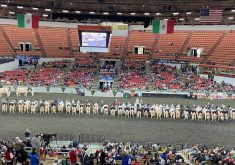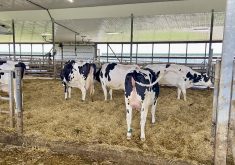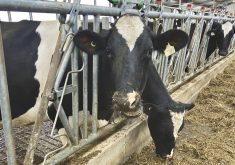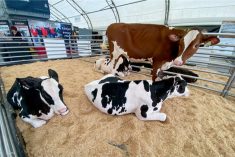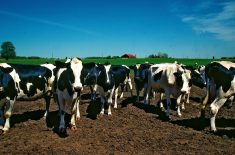Tom Kestell gets huge milk production from his Wisconsin dairy herd, but the difference comes from the small details he consistently gets right.
Kestell’s herd of about 100 milking cows has hit 45,000 lbs., or a 20,411 kg rolling herd average.
That large production has his nutritionist rethinking ration formulation standards and forming new ideas on biological potential for milk production.
Why it matters: American farmers continue to deal with chronically low milk prices. Most who stay in business do so by expanding. Kestell is improving his business through milk volume increases.
Read Also
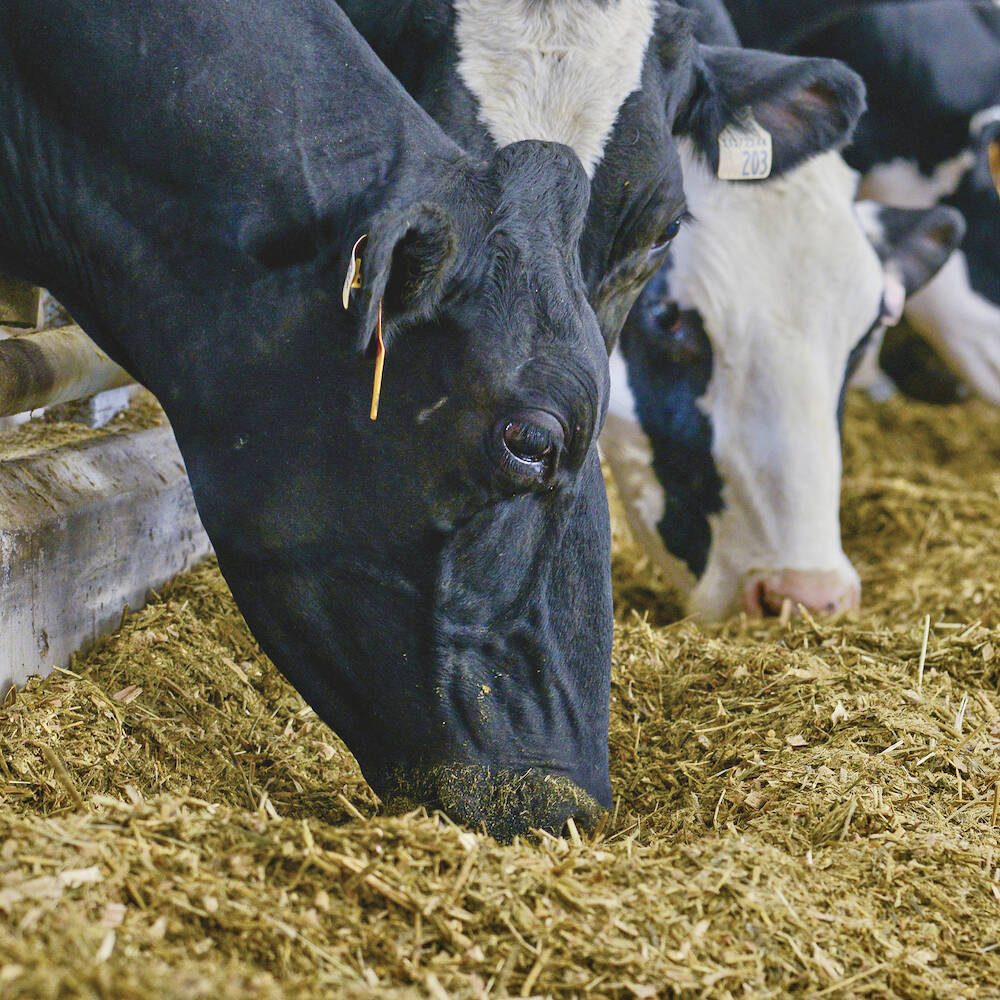
Byproducts with benefits for dairy cows
Local food processors can be a source of financially advantageous byproducts for dairy cows, but make sure the ration is properly balanced.
Consistency is key for the tie-stall herd to maintain and continually increase its per cow production, said Kestell during a presentation at the World Dairy Expo.
Kestell listed several steps he takes on his farm that he considers critical to developing and feeding cows that yield as well as any in the world.
One of his cows, Ever-Green-View My Gold set a world record for milk production with a 365-day record of 74,650 pounds of milk, as a five year old. She is classified Excellent.
Kestell’s on-farm steps to boost production include several measures:
- Pasteurizing calf milk.
- Limiting hay fed to calves until they are weaned so they consume more grain.
- Baling corn stalks, then spreading them on haylage for heifers and chopping them together into a silo. This makes for a lower-protein ration. Many farmers use straw to dilute extra high quality feed.
- Kestell is growing all Brown Mid-Rib (BMR) corn for his silage this year after gradually increasing his BMR corn usage over 10 years.
- The farm cuts its silage corn about 34 inches above the ground, only getting the most digestible parts of the stalk. “This has dramatically changed forage digestibility,” said Kestell.
- All heifers are genomic tested.
- The use of upright silos so that there is plenty of flexibility available in feeding forages.
- No forages that have been compromised at all go into the milking cow ration. “Any time you insult a cow’s digestive tract, you insult milk production,” he said.
Ever-Green-View’s nutritionist is Steve Woodward, of Nutrition Professionals Inc. He’s worked with Kestell for 30 years.
The farm doesn’t have any ration secrets, said Woodward, but “forage quality is a big, big deal.”
Consistency of forage quality is as important as having a really high feed value, he said.
The family has won the forage Super Bowl at the World Dairy Expo twice.

The ration might not be exceptional, but as Woodward lists the extra things that the Kestell family does, it is obvious that details make the difference.
The farm top dresses about four pounds per day per cow of high quality baleage on top of the total mixed ration. It’s like the sprinkles on ice cream for the cows, said Kestell, and is a factor in the very high dry matter intake that the farm’s cows have each day.
How to explain so much milk?
Woodward said that the traditional models of how much energy is needed for certain milk production don’t fit cows that milk as well as Kestell’s cows.
At an average herd production of 63.5 kg per day, that’s almost 2.5 kg of butterfat production per day. That’s like a stick of butter an hour, said Woodward.
The ration would only supply 1.5 kg of fat. The rest is created by rumen volatile fatty acids.
When the diet from Kestell’s farm is put into the models, it says his cows are only getting 81 per cent of the required energy and 76 per cent of required amino acids.
However, the cows are making much more milk and are generally healthy. Kestell said they’ve had one displaced abomasum, a measure of herd nutrition, in 10 years.
The milk components are good in the herd too.
The difference could be in biological efficiency.
Average herds are 20 to 35 per cent efficient in their use of nitrogen. Woodward says Kestell’s herd is 40 per cent nitrogen efficient and top producers like the My Gold cow are 50 per cent.
Kestell said that genetics are an important factor at such high production.
“They say you can breed for type and feed for production,” he said. “That’s an oxymoron if I’ve ever heard one.”
If you are producing an average of 13,000 kg, then management is everything in getting milk. Producing milk at the levels of Kestell’s herd, requires management, and cows with the genetic potential to produce that much milk.
Kestell said he does not intend to grow the herd and there’s no way to expand the current facilities. However, he’s been increasing his herd’s production by about 550 kg per year and if that continues, he’ll hit a 50,000 lbs. or 22,600 kg per cow average in the next five years.




